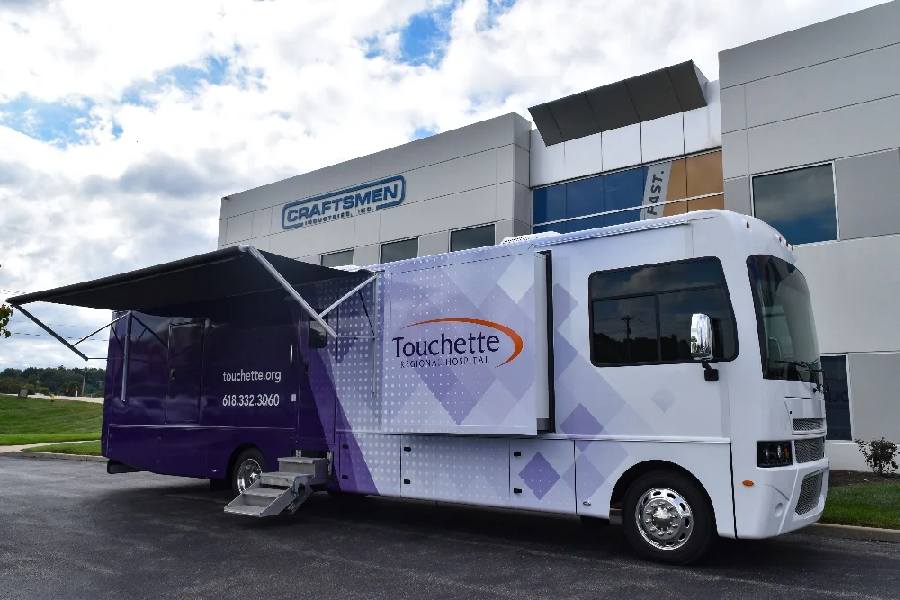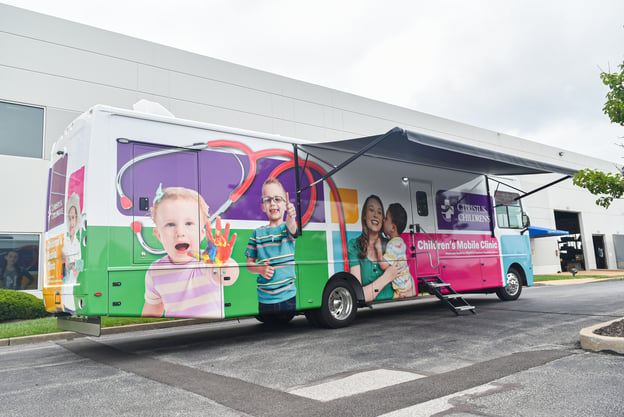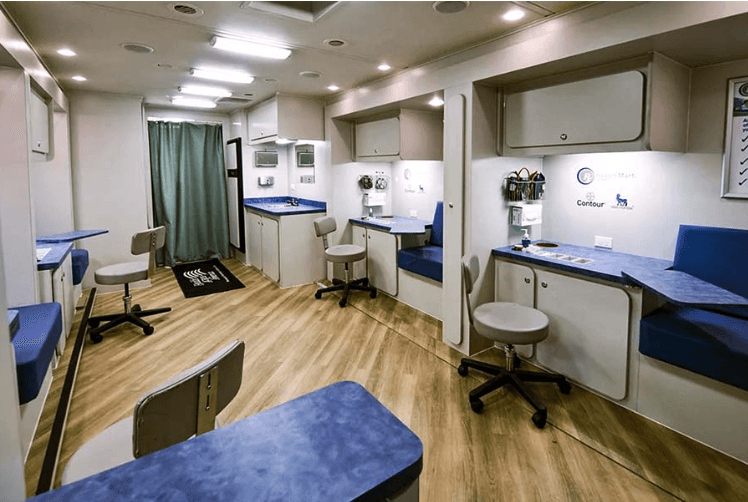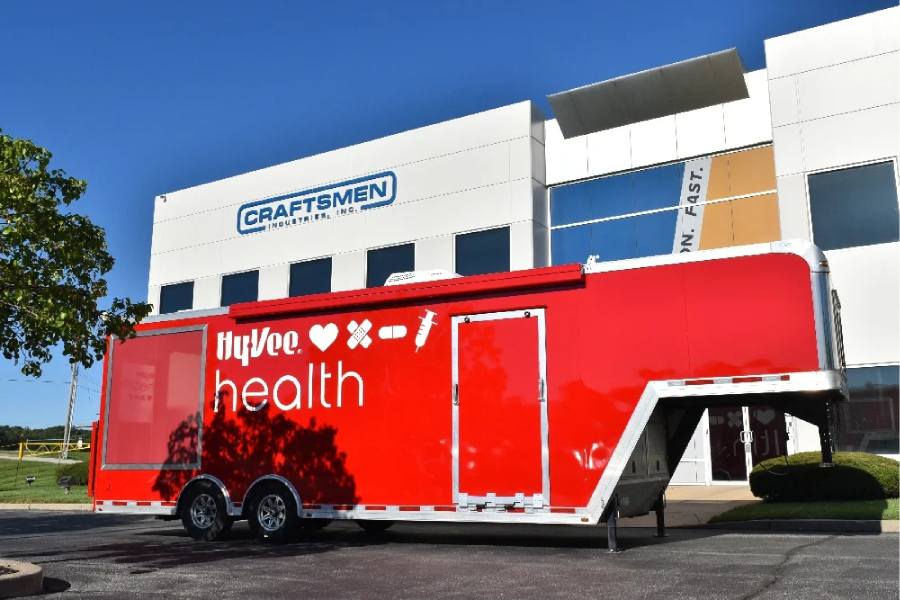Pro Guide: Who Can Practice in Mobile Medical Vehicles?
Innovations in healthcare delivery have led to the emergence of mobile medical vehicles, often serving underserved communities and remote areas....
5 min read
Craftsmen Industries Sep 1, 2023 10:25:00 AM

As pandemics and natural hazards push professionals and healthcare providers to the brick, our medical needs continue to evolve. That’s why many medical centers have begun creating innovative alternatives to meet those needs sustainably and equitably. So, if you’re wondering where are mobile medical units most effective, we have the answer.
Mobile health services can play a significant role in unreachable locations, especially among those with vulnerable populations and disadvantages. This may include communities with barriers that prevent accessibility to healthcare facilities.
For many, affordable access to medical facilities and treatments may not be available without mobile medical units. We’ll go over all the places where mobile medical units are most effective and represented and learn more about what they are and the services they provide.

Mobile health units are innovative models for health services that vary in service mix, patient demographics, as well as relationships with the fixed health system. The clinics are flexible and accessible operations that provide a variety of health services to isolated groups.
Some of the services they provide are:
Mobile Medical Vehicles can offer the first line in urgent diseases and defense against many illnesses for underserved populations. These critical services can bridge the gap between community health needs and traditional care delivery modes.
Additionally, these units may also provide patients with specialty care, including mammography, mental health support, as well as ophthalmology services. Mobile medical units improve overall health care in isolated communities and provide various benefits for them.
Patients receive high-quality care at significantly lower costs than traditional facilities, which makes them an excellent alternative for people with low income. Moreover, given the nature of mobile clinics, they’re easily accessible, and healthcare providers can tailor their services to specific communities and locations.
Despite all efforts to improve and make quality health care available for everyone, many institutes faced great challenges in addressing the issue. Many communities and cultures continue dealing with issues with accessing health services and facilities. This includes vulnerable groups, such as low-income individuals, people who belong to minority racial and ethnic groups, and rural communities.
In addition to the challenges of accessible physical facilities and health providers, many populations face significant reductions in health service quality as well as experience a cutback from modern technologies and practices. There is also an insufficient number of medical personnel to meet residential healthcare needs.
So, to combat these issues, healthcare institutes had to increase the number of accessible facilities and affordable, quality, equitable, and culturally sensitive health services. Mobile medical units began taking force.
These clinics are able to deliver the required services directly to the population in need. They can take any form, including buses, vans, RVs, and trailers. Mobile medicine units offer care to individuals who may not otherwise have access to healthcare services.
So, in what locations are mobile healthcare units most successful? Where do medical vans show the highest effectiveness? Which areas see the best results from mobile health units?
As we know, mobile medical units prove highly effective in diverse scenarios and locations where traditional healthcare facilities could be inaccessible, insufficient, or overwhelmed. The effectiveness and performance of mobile health clinics is often maximized in the following scenarios:
The objective of mobile healthcare is to provide critical healthcare in unreachable areas. As the lack of medical facilities and reduction of care disparities, mobile medical units serve to fill in the gaps. They have proven to be significantly effective and useful as they provide primary and preventive care for high-risk patients.
In order to understand the overall health of a region, healthcare industry experts often look at emergency department utilization rates. When ED utilization rates are excessive, experts can determine whether communities require mobile centers and critical primal care.
With that being said, here are scenarios where mobile medical units are most effective and show the most results and success.
The ability to access healthcare services and facilities is vital to maintaining a good and healthy life. However, countless underserved and isolated rural communities face various challenges regarding proper health treatment.
These communities are less-populated areas and lack many of the residential requirements a modern city consists of. The residents often encounter many difficulties when it comes to healthcare services. These barriers limit their ability to maintain proper care. Even if adequate supplies exist in the community, there are still many areas that are not yet developed.
Transportation, reduced quality of healthcare, and communication issues may be additional barriers for rural residents to receive proper care.
Ideally, these areas should be provided with alternatives to healthcare facilities and services. Residents should be able to confidently and conveniently access healthcare services, such as primary care, dental care, emergency care, behavioral health, and public health.
Many mobile medical units are mostly effective in these specific areas and provide accessible and affordable care for residents. They’re important for health risk reduction, disease prevention, and overall life quality.
Remote areas refer to geographical regions located outside modern society. These places are considered such as they are based over 350 km away from the nearest health service center.
This issue acts as a barrier for these communities to receive year-round access to healthcare facilities and services. In addition to being in a long-distance area, these communities lack transportation links to the services that a typical populated area provides.
An isolated area describes a region that lacks road access, healthcare facilities and emergency services.
However, health departments recognized this issue and based many mobile health units in these remote and isolated areas.
These mobile units are significantly effective in these regions and provide primary, basic, and urgent health care services. They consist of registered personnel and act accordingly in isolated communities.
Disaster-prone regions refer to areas that are located near natural hazards and are prone to technological or social risks. These areas significantly affect the living style of the population of the community. It may dramatically increase in expense, loss of energy, food, and services at any given moment.
Additionally, these areas have a significantly increased risk of illness, disease, and health issues. This is why mobile medical units are most effective and beneficial for these citizens.
These mobile units provide critical health services, such as physical, mental, and social health services, emergency hazard services, and illness detection, diagnosis, and treatment.
Some of the most common types of disasters prone to regions include:
Mass gatherings and events may pose many physical and mental threats to everyone involved. During these gatherings, individuals and participants may receive medical and healthcare services due to injuries or illnesses that can arise.
Mobile medical units are crucial for the prevention of any undesirable situation and are able to provide proper care and treatment for every visitor in need. While first respondents provide safety and security in these gatherings, additional medical services might become necessary.
In such cases, medical services cover additional assessments, treatments, disease prevention, as well as transport links between patients with critical conditions and near hospital facilities. They provide services with modern technologies and deliver all the necessary medication and equipment required for gathering health protection.
The mobile medical units manage the following:
Homeless populations are individuals in the state of being unhoused or unsheltered. The devastating effect of homelessness affects many people varying from country to country. The condition of lacking stable, functional, and safe housing may cause many issues and challenges, especially when it comes to maintaining personal health.
Even though the basic needs of human individuals of personal shelter, warmth, and safety are lacking, they also face primal issues for accessibility to hospitalization and health services. Homeless populations experience higher rates of physical and mental challenges compared to the general population. This includes chronic disease severity, respiratory conditions, and rates of mental health illnesses.
Because of the high rates of medical requirements for the homeless populations, the health institution recognized the issue and created a response.
Many non-profitable mobile medical centers began to provide primal and critical care for the homeless. This includes services such as dental care, disease and illness prevention and detection, emergency service, behavioral health, and public care.
These units are most effective regarding healthcare for the homeless and disadvantaged populations. Mobile medical units help meet the primal need that exists in this type of population.
In conclusion, mobile medical units are crucial healthcare providers in unreachable and disadvantaged population groups. Many health institutes face challenges in providing proper health services for these communities and cultures.
Mobile medical units are able to cover many areas in which there’s a lack of a conventional hospital. Such areas are rural communities, remote and isolated areas, disaster-prone regions, and homeless populations, among the most popular.
The innovation of mobile medical units has provided outstanding achievements and has been delivering the best possible outcomes when it comes to providing health services to specific communities.
Hopefully, now you’ve discovered where are mobile medical units most effective and what they provide for vulnerable groups.

Innovations in healthcare delivery have led to the emergence of mobile medical vehicles, often serving underserved communities and remote areas....

Mobile medical vehicles are highly sufficient types of vehicles used by healthcare providers who want to help underserved communities. But who...

Mobile medical coaches, also referred to as mobile medical units, are a primary means of delivering medical service to underserved communities,...